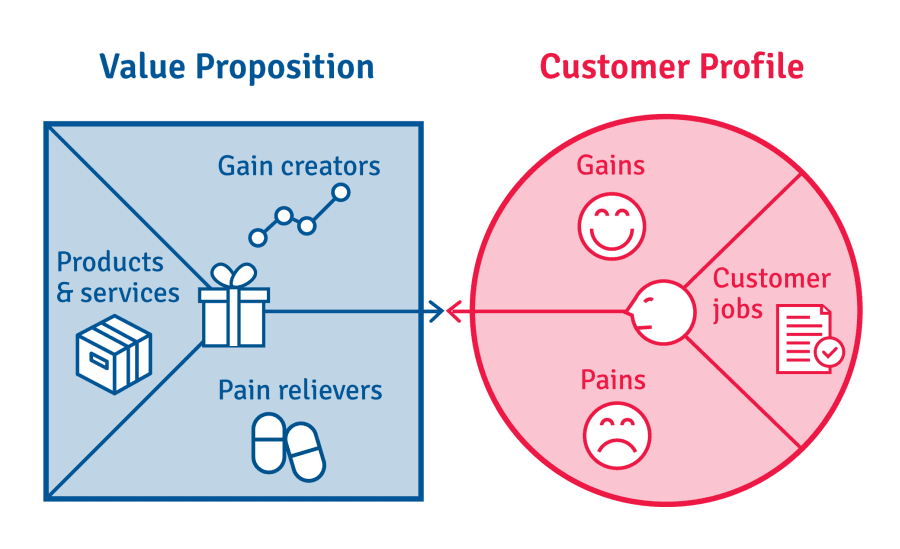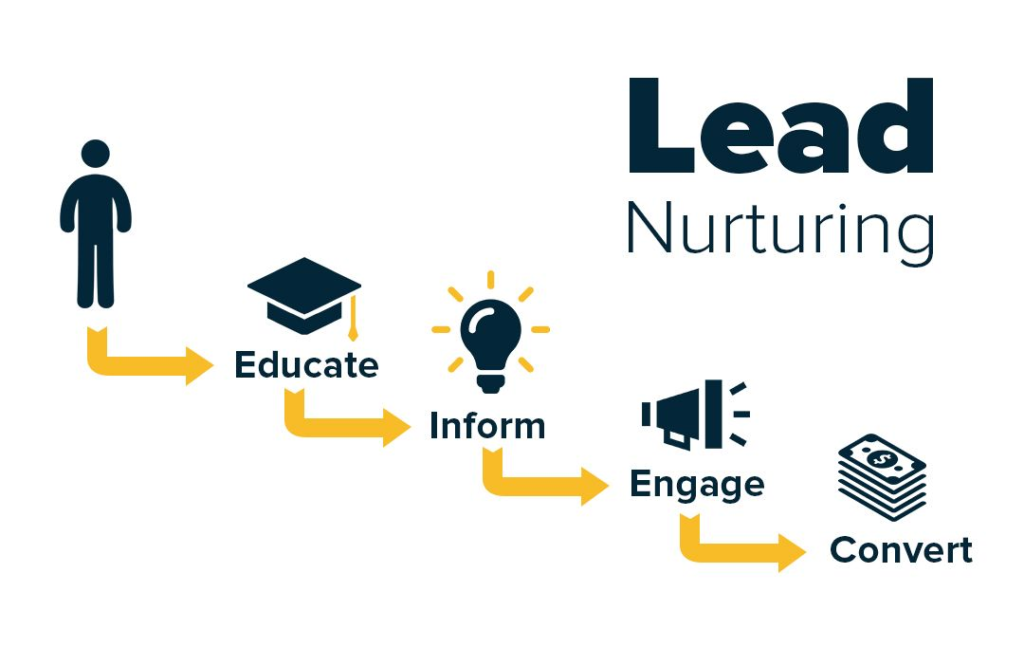Welcome to our comprehensive guide on building a strong B2B pipeline for new companies. In today’s competitive business landscape, a well-structured pipeline is essential for sustainable growth and success.
In this blog, we’ll walk you through the step-by-step process of creating a robust B2B pipeline that generates high-quality leads and drives revenue. Let’s dive in
Building a robust B2B pipeline is of utmost importance for the success and growth of any company in the B2B space.
Here is why?
1. Consistent Lead Generation: A robust B2B pipeline ensures a consistent flow of high-quality leads for your business. With a well-defined pipeline, you can attract, engage, and convert potential customers into paying clients. This consistent lead generation forms the foundation for sustainable business growth.
2. Increased Conversion Rates: By implementing a structured pipeline, you can effectively nurture leads and guide them through the buying process. This strategic approach enables you to build trust, address customer pain points, and demonstrate the value of your product or service. As a result, your conversion rates improve, and more leads turn into satisfied customers.
3. Higher Revenue Generation: A strong B2B pipeline directly contributes to increased revenue generation. With a steady stream of qualified leads and an efficient sales process in place, you have a greater opportunity to close deals and generate sales. A well-managed pipeline ensures that your sales team focuses on the most promising leads, leading to higher revenue for your business.
4. Improved Customer Relationships: A robust B2B pipeline allows you to develop solid and lasting relationships with your customers. Through effective lead nurturing and personalized communication, you can understand their needs, provide timely solutions, and exceed their expectations. Delivering exceptional customer experiences enhances customer loyalty and encourages repeat business.
5. Better Forecasting and Planning: A structured B2B pipeline provides valuable insights into your sales funnel and customer behavior. By tracking and analyzing key metrics, you gain visibility into your sales pipeline, allowing you to make accurate sales forecasts and plan for future growth. This data-driven approach helps you allocate resources effectively and make informed business decisions.
6. Competitive Advantage: In the highly competitive B2B market, having a robust pipeline gives you a significant advantage over your competitors. It enables you to establish a strong market presence, differentiate yourself through compelling value propositions, and consistently engage with potential customers. A well-managed pipeline positions your company as a trusted industry leader, making it harder for competitors to compete.
Here is a Step- By Step Guide How to Build a Solid Lead Pipeline :

Step 01: Defining Your Ideal Customer Profile (ICP)
Defining your Ideal Customer Profile (ICP) is a critical first step in building a strong B2B pipeline. It involves understanding your target market and identifying the characteristics of your ideal customers. Let’s break down the process:
A. Research Your Target Market:
Start by conducting thorough market research to gain insights into your potential customers. Look at industry trends, market size, and competitor analysis. Understand the challenges and pain points that your target audience faces.
Example: Suppose you’re a software company offering project management solutions. During your market research, you discover that mid-sized technology companies with remote teams are struggling with inefficient project tracking and collaboration. This insight helps you narrow down your target market.
B. Identify Key Characteristics:
Once you have a broad understanding of your target market, it’s time to dig deeper and identify the key characteristics of your ideal customers. Look for commonalities among your existing customers or those who have shown the most interest in your product or service.
Example: Analyzing your customer data, you find that your most satisfied customers are mid-sized technology companies with 50-100 employees, distributed teams, and a need for seamless integration with popular project management tools like Jira or Trello.
C. Consider Firmographics and Demographics:
Firmographics and demographics play a crucial role in defining your ICP. Firmographics include factors like company size, industry, revenue, and location. Demographics focus on individual characteristics such as job titles, responsibilities, and decision-making authority.
Example: In the case of your software company, you determine that your ideal customers are mid-sized technology companies (firmographics) with distributed teams led by project managers or team leads (demographics). They are typically located in major tech hubs like San Francisco, New York, and Austin.
D. Analyze Psychographics and Behavior:
Psychographics delve into the attitudes, interests, values, and motivations of your ideal customers. Understanding their psychographic profile helps tailor your messaging and approach to resonate with them. Additionally, analyze their purchasing behavior and buying patterns.
Example: Digging deeper, you discover that your ideal customers value efficiency, collaboration, and adaptability. They are open to exploring new tools and technologies to streamline their project management processes. They often attend industry conferences and follow thought leaders in the project management space.
E. Refine and Iterate:
Defining your ICP is an iterative process. As you gather more data and gain experience, refine your profile accordingly. Continuously analyze and adjust your ICP to ensure it remains aligned with the evolving needs of your target market.
Example: After launching targeted marketing campaigns, you notice that companies with 50-100 employees consistently convert at a higher rate than larger enterprises. As a result, you decide to focus your efforts exclusively on mid-sized companies within this employee range.
By defining your Ideal Customer Profile (ICP), you can create targeted marketing messages, identify the most promising leads, and tailor your sales approach to resonate with your ideal customers.
Step 02: Develop a Compelling Value Proposition

Developing a compelling value proposition is crucial for any B2B company as it helps differentiate your offering from competitors and clearly communicates the unique value you provide to your target audience. Here’s a five-step process to help you create a strong value proposition:
Step 1: Understand Your Target Audience:
To develop an effective value proposition, you must have a deep understanding of your target audience. Identify their pain points, challenges, and goals. Research their industry, needs, and preferences. This will enable you to tailor your value proposition to address their specific needs.
Step 2: Identify Your Unique Selling Points:
Determine what sets your product or service apart from competitors. Look for unique features, benefits, or advantages that your offering provides. This could include cost savings, time efficiency, improved performance, or specialized expertise. These unique selling points will form the foundation of your value proposition.
Step 3: Communicate the Benefits:
Focus on the benefits your customers will gain by using your product or service. Highlight how your offering solves their problems, improves their operations, or helps them achieve their goals. Clearly articulate the value and outcomes they can expect. Use language that resonates with your target audience and is easy to understand.
Step 4: Be Specific and Quantify When Possible:
To make your value proposition more compelling, be specific and use numbers or data whenever applicable. For example, instead of saying, “Our software improves efficiency,” say, “Our software reduces processing time by 50%, resulting in significant cost savings.” Specificity adds credibility and helps customers visualize the impact of your offering.
Step 5: Test and Refine:
Once you have created your initial value proposition, test it with your target audience and gather feedback. Pay attention to how they respond and make adjustments accordingly. Continuously refine your value proposition based on customer insights and market dynamics. A strong value proposition is a result of iterative improvements.
Step 03: Effective Lead Generation Strategies

To ensure successful lead generation, it’s important to implement effective strategies and leverage the right platforms.
A. Content Marketing:
Content marketing involves creating and sharing valuable and relevant content to attract and engage your target audience. This strategy allows you to showcase your industry expertise and build credibility. Platforms such as your company blog, guest blogging on industry publications, and social media can be utilized to distribute your content and drive traffic to your website.
Email marketing is an effective way to nurture leads and build relationships. By capturing email addresses through website forms or gated content, you can send targeted and personalized emails to your prospects. Platforms like Mailchimp, HubSpot, or ActiveCampaign can help you automate your email campaigns, track open rates, and measure the success of your efforts.
Leveraging social media platforms such as LinkedIn, Twitter, and Facebook can significantly boost your lead-generation efforts. Share informative and engaging content, participate in industry discussions, and join relevant groups to connect with potential customers. You can also utilize social media advertising tools, like LinkedIn Ads or Facebook Ads, to target specific audiences based on job titles, industries, or interests.
D. Search Engine Optimization (SEO):
Optimizing your website and content for search engines helps you rank higher in search results, making it easier for potential customers to find you. Conduct keyword research to understand what your target audience is searching for and incorporate those keywords into your website copy, blog posts, and meta tags. Platforms like Google Analytics and Google Search Console can provide insights into your website’s performance and help you refine your SEO strategy.
E. Webinars and Events:
Hosting webinars or participating in industry events and conferences can generate quality leads. Webinars allow you to showcase your expertise, educate your audience, and capture leads by requiring registration. Similarly, events provide networking opportunities and a chance to engage with potential customers directly. Utilize event management platforms like Eventbrite or Meetup to promote and manage your events effectively.
F. Account-Based Marketing (ABM):
ABM is a targeted approach that focuses on specific high-value accounts. By identifying key decision-makers within those accounts and personalizing your marketing efforts, you can increase your chances of generating qualified leads. Utilize platforms like Terminus, Demandbase, or Engagio to streamline your ABM campaigns and deliver personalized messages to your target accounts.
Experiment with different platforms and tactics, track your results and make adjustments based on data and feedback.
Step 04: Nurture and Qualify Leads

1. Understand Lead Nurturing:
Lead nurturing is about cultivating relationships with leads at various stages of the buying journey. It’s essential because not all leads are ready to buy immediately. By nurturing them, you can stay top-of-mind and guide them toward a purchasing decision.
2. Develop a Lead Nurturing Strategy:
Create a plan to engage and educate leads over time. This can involve a combination of email marketing, content marketing, social media interactions, and personalized messaging. Tailor your approach based on the buyer’s personas and their pain points.
3. Provide Relevant and Valuable Content:
Create high-quality content that addresses the needs and challenges of your target audience. This content can take the form of blog posts, e-books, whitepapers, webinars, or case studies. The goal is to offer valuable information that positions your company as a trusted resource.
4. Implement Marketing Automation:
Utilize marketing automation tools to streamline your lead nurturing efforts. Set up automated email campaigns that deliver targeted content based on the lead’s behavior and engagement level. Automation allows you to scale your efforts and ensure consistent communication.
5. Segment Your Leads:
Segment your leads based on criteria such as industry, company size, or engagement level. This helps you tailor your messaging and content to specific groups, increasing the relevance and effectiveness of your nurturing efforts. A personalized approach enhances the chances of conversion.
6. Use Lead Scoring:
Implement lead scoring to assess the level of interest and readiness to buy for each lead. Assign scores based on criteria like engagement with your content, website visits, or interaction with sales representatives. This helps prioritize leads for sales follow-up.
7. Coordinate with Sales:
Maintain a close relationship with your sales team to ensure alignment and effective handoff of leads. Share insights and data about lead behavior, engagement, and scoring. Collaborate to define lead qualification criteria and ensure a seamless transition from marketing to sales.
8. Monitor and Adjust:
Continuously monitor the performance of your lead nurturing campaigns. Track metrics such as email open rates, click-through rates, and conversion rates. Analyze the data to identify areas for improvement and make necessary adjustments to optimize your nurturing efforts.
9. Personalize the Experience:
Tailor your communication and content to each lead’s specific needs and preferences. Use their name in emails, reference their industry or pain points, and provide relevant recommendations or solutions. Personalization helps build trust and strengthens the connection with leads.
10. Follow Up and Engage:
Engage with leads promptly and consistently. Respond to their inquiries, address their concerns, and provide additional information when needed. By being responsive and attentive, you demonstrate your commitment to their success and increase the likelihood of conversion.
Remember, lead nurturing is a long-term process. Be patient, persistent, and genuinely helpful.
Step 05 Measure and Analyze Key Metrics :

As a B2B marketer, I understand the importance of a Sales Customer Relationship Management (CRM) system in managing and optimizing your sales processes. Implementing a CRM system can streamline your sales efforts, improve team collaboration, and enhance customer relationships.
Step 1: Define your requirements and goals
Before choosing a CRM system, identify your specific needs and goals. Determine the features and functionalities that are crucial for your sales team, such as contact management, lead tracking, pipeline management, reporting, and integrations. Clearly defining your requirements will help you choose the right CRM system that aligns with your business objectives.
Step 2: Research and evaluate CRM options
Conduct thorough research to identify CRM systems that meet your requirements. Consider factors such as ease of use, scalability, pricing, customer support, and integration capabilities. Read reviews, compare features, and request demos or trials to get a better understanding of each CRM system’s capabilities.
Step 3: Select the right CRM system
Based on your research and evaluations, choose the CRM system that best suits your needs. Ensure that it aligns with your budget, offers the required features, and has a user-friendly interface. Also, consider the CRM’s compatibility with your existing tools and systems to ensure smooth integration.
Step 4: Customize the CRM to fit your sales process
Once you’ve selected a CRM system, customize it to match your specific sales process. Define stages in your sales pipeline and customize the CRM accordingly. Set up fields and data points that align with your business requirements. This step is crucial as it ensures that your CRM system is tailored to your unique sales process.
Step 5: Cleanse and import data
Before importing data into your CRM system, ensure that it is clean and accurate. Remove duplicates, standardize data formats, and validate information to maintain data integrity. Import your existing customer data, leads, and contacts into the CRM system to have a centralized database for your sales team to work with.
Step 6: Train your sales team
Proper training is vital for successful CRM implementation. Train your sales team on how to use the CRM system effectively. Provide step-by-step instructions on entering and updating data, managing contacts, tracking leads, and generating reports. Encourage your team to ask questions and provide ongoing support as they familiarize themselves with the new system.
Step 7: Monitor and optimize usage
Regularly monitor the usage of your CRM system and track key performance indicators (KPIs) to ensure its effectiveness. Analyze data on pipeline progress, conversion rates, and team
performance. Identify bottlenecks and areas for improvement, and make necessary adjustments to optimize your CRM usage.
FAQs:


